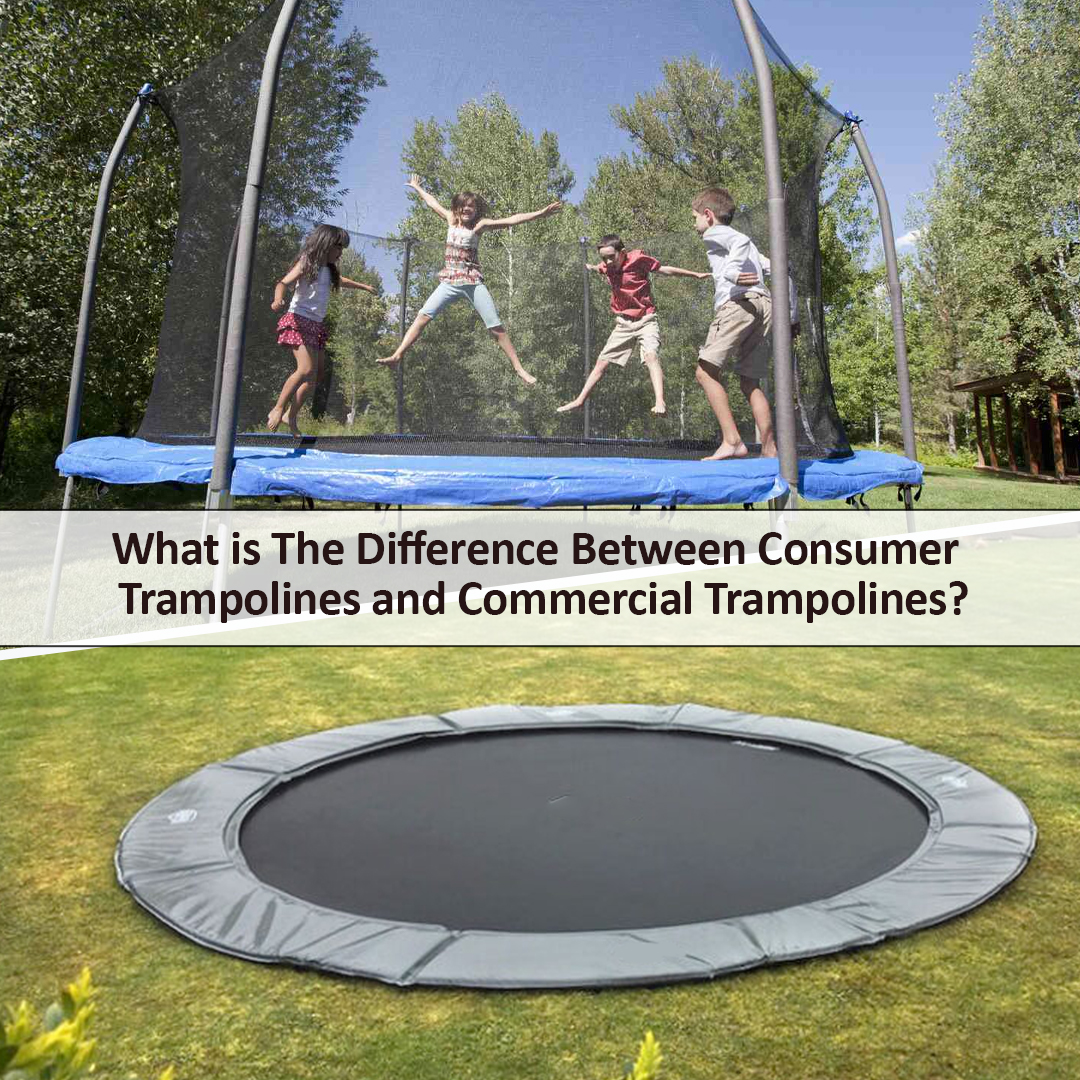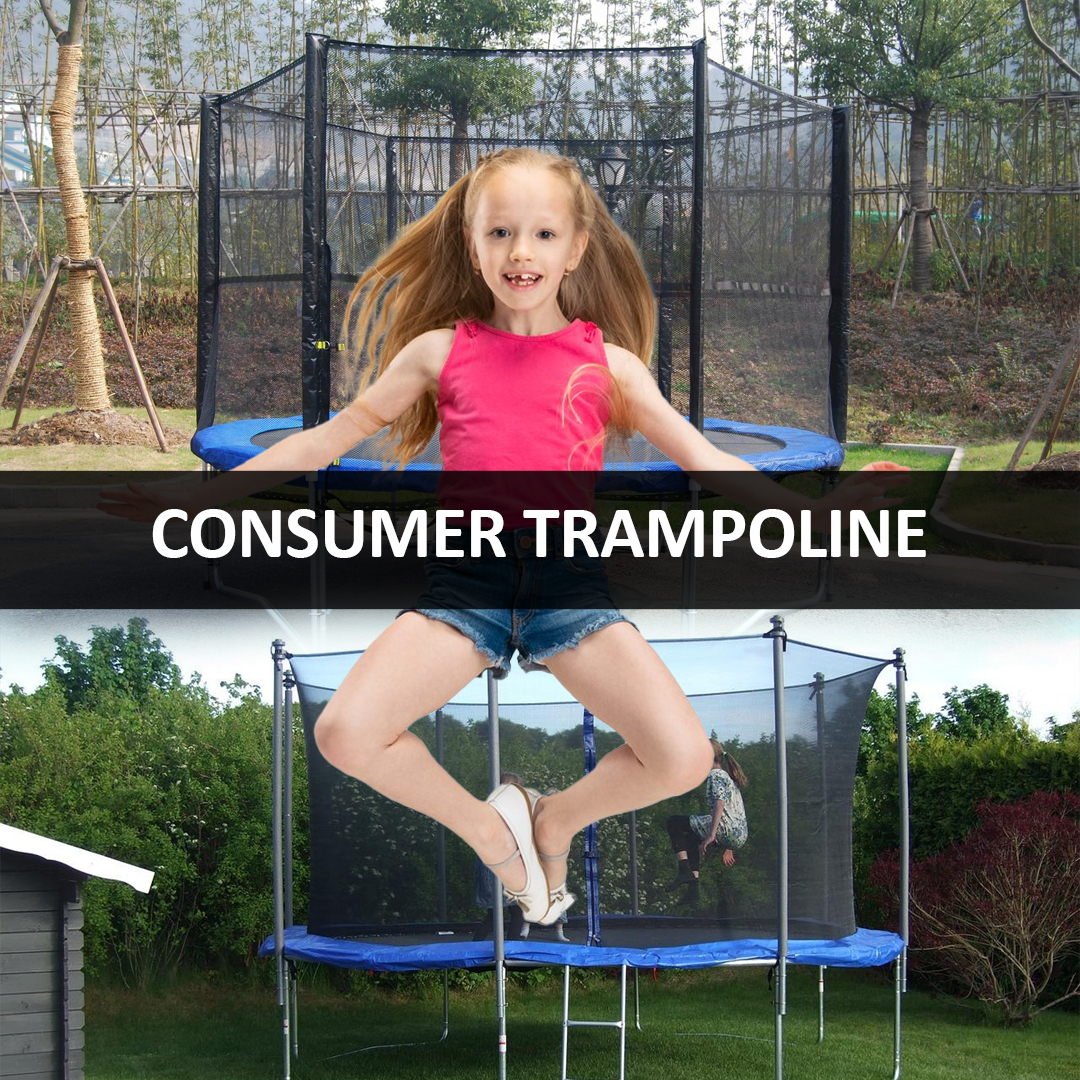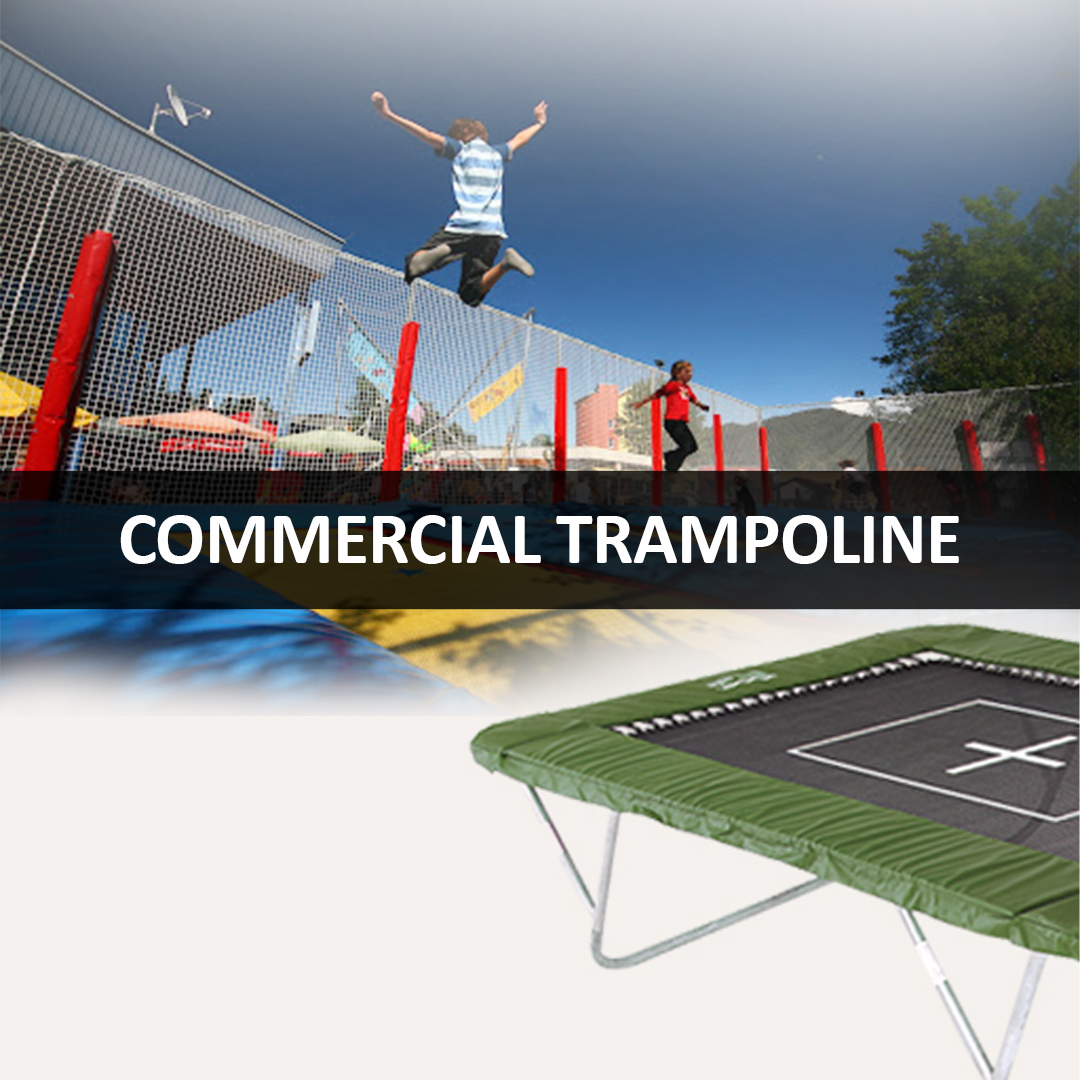
The trampoline industry in the UK has grown exponentially over the past decade. Once only seen in circuses and gymnastics gyms, trampolines have become popular recreational items for home use. As the industry and popularity have grown, the types and qualities of trampolines have diversified. For the average homeowner looking to purchase a trampoline, it can be difficult to determine the differences between models and which is the best choice for your needs.
It’s important to understand the differences between consumer-grade trampolines, designed for basic recreational jumping, and commercial-grade trampolines, designed for more intensive use. Consumer trampolines are more affordable but are not as durable or long-lasting. They are best for occasional recreational use by children and casual jumpers. Commercial trampolines are higher quality, last longer, and are safer for more frequent and energetic jumping by both children and adults. They do come at a higher price point, however.
In this blog, we’ll explore the key differences between consumer and commercial trampolines in depth so you can make an informed choice about which type of trampoline is right for you and your family.
Consumer Trampoline

A consumer trampoline is designed for recreational use in a residential setting, like in your garden. These trampolines typically range from 8 to 16 feet in diameter and are available at most large retailers that sell outdoor play equipment. Consumer trampolines are constructed with less durable materials than commercial trampolines to keep costs down, so they generally have a shorter lifespan of 5 to 10 years with regular use.
Key features of consumer trampoline
Consumer trampolines offer basic features for casual bouncing and exercising at home. They will have an all-weather mat made of polypropylene mesh, steel springs or elastic bands, and a padded frame. Some models may include safety pads, nets, or anchor kits as optional accessories. Most consumer trampolines can be disassembled for storage when not in use. The mat and springs provide a softer, more forgiving bounce than commercial trampolines.
Benefits and drawbacks
Consumer trampolines are very affordable and convenient for home use, but their lower quality components mean a higher risk of injury if misused or overstressed. The lighter mat and spring materials can degrade more quickly with exposure to the elements, and the lower weight limits mean they may not stand up well to frequent, high-impact bouncing by heavier individuals or rowdy groups of jumpers. Proper safety measures like secure enclosure netting, padding, and adult supervision are a must, especially for children.
Audience for consumer trampoline
Consumer trampolines are ideal for families with children or casual adult jumpers looking for an easy way to get some fun, low-impact exercise at home. They can be a great source of entertainment for birthday parties, barbecues, and other social gatherings. However, thrill-seeking teens and hardcore trampoline athletes may find consumer trampolines lacking in bounce, durability, and maximum user weight. For these groups, a commercial trampoline is probably a better choice.
Commercial Trampoline

A commercial trampoline is a large trampoline designed for use in gyms, recreation centres, and trampoline parks. Unlike the smaller recreational trampolines for home use, 12 to 14ft trampolines are available in the commercial type. They also have reinforced parts like stronger springs and safety pads and an enclosure netting to prevent falls.
Key features of commercial trampoline
Some key features of commercial trampolines include:
- Heavy-duty galvanised steel frames for durability and weather resistance.
- Extra-large jumping surfaces between 14 to 17 feet in diameter to accommodate multiple jumpers.
- Reinforced mats with a weight capacity of at least 350-500 lbs to handle frequent jumping.
- Stronger and more springs to provide more bounce and absorb impact.
- Thicker safety pads over the springs and frame for additional protection.
- Enclosure netting around the trampoline to prevent falls and injuries.
Benefits and drawbacks
The main benefits of commercial trampolines are their large size, durability and safety features which make them ideal for gyms and trampoline parks. However, their large size also means they require a significant amount of space and investment. They are also more difficult to assemble and disassemble. The initial cost and maintenance of a commercial trampoline are higher compared to a standard recreational trampoline.
Audience for commercial trampolines
Commercial trampolines are designed primarily for use in gyms, recreation centres, and trampoline parks. They are also getting popular in schools and universities, as they are built to handle frequent use by many people of various skill levels and sizes, from children to adults. For most homeowners, a commercial trampoline would be too large and expensive. They are best suited for professional use in facilities with properly trained staff and the proper insurance coverage.
Differences between Consumer and Commercial Trampolines

Compared to commercial trampolines, consumer trampolines typically have shorter, weaker springs and frames made of lower-quality steel. Commercial models use much heavier gauge steel for the springs and frame, allowing for higher bounce and greater durability. The padding, netting and mat on commercial trampolines are also made of more rugged, weather-resistant materials intended to withstand heavy use.
Safety features
Commercial trampolines have more stringent safety requirements to reduce the risks of injury. They feature stronger padding, netting and anchoring for stability. The springs are also located below the trampoline mat, so jumpers can’t come into direct contact with them. Some models have a springfree design with fibreglass rods instead of springs. Commercial trampolines must meet certain safety standards for schools, gyms and recreational facilities.
Durability and lifespan
A commercial trampoline will generally last 5-10 times longer than a consumer model, typically 10-20 years versus 2-5 years. The heavy-duty construction is made to handle frequent, high-intensity jumping by many different users. Although commercial trampolines have a higher upfront cost, their durability and longer lifespan mean lower cost per year of use.
Pricing considerations
You can expect to pay 2 to 3 times more for a commercial trampoline compared to a consumer model of similar size. However, due to their sturdier build and longer usable life, commercial trampolines may save money in the long run. If used for business or recreational purposes, a commercial trampoline is designed to generate revenue through customer admissions or memberships, offsetting the higher capital costs.
Choosing the Right Trampoline for Your Needs

Use
The most important factor to consider is how the trampoline will be used. Consumer trampolines are designed for recreational garden use by families and children. They typically have lower weight limits and may not stand up well to frequent or vigorous use. Commercial trampolines are built for more intensive use, such as in gyms, training facilities and competitive environments. They have higher weight capacities, sturdier construction, and additional safety features for high performance.
Safety
How much do safety and durability matter to you? Commercial trampolines must meet strict industry safety standards and are built to withstand heavy use over a long period of time. They have reinforced netting, padding and springs as well as a more durable jumping mat. Consumer trampolines may be slightly less safe and durable, especially if used frequently or by larger individuals. For safety, a commercial model is probably your best choice.
Size
The size of trampoline you need depends on how many people will be using it and the kinds of skills or routines you want to perform. Consumer trampolines typically range from 8 to 15 feet in diameter, suitable for 1-2 children or adults. Commercial trampolines are customised and can go up to 16 feet for competitive training. Consider how much space you have in your garden and any size restrictions in your neighbourhood before choosing a size.
Budget
Commercial trampolines are a serious investment, often starting around £2500 to £10000 or more for a basic model, depending on the size. Quality consumer trampolines typically range from £650 to £4000. If cost is a concern, a consumer trampoline may suit your needs, especially if used occasionally and properly maintained. But for long-term value and performance, a commercial trampoline is worth the investment.
In the end, evaluating how the trampoline will be used and your key requirements will determine whether a consumer or commercial model is right for you. And of course, always follow recommended safety guidelines no matter which trampoline you choose!
Conclusion
We’ve covered the key areas like size, weight limits, materials, safety features and intended usage. The bottom line is that commercial trampolines are designed for heavy-duty use in gyms and parks, while consumer ones are made for lighter recreational jumping at home. Keep these differences in mind when deciding which type of trampoline is right for your needs. And remember to always follow safety guidelines no matter which trampoline you’re jumping on. With the proper precautions, trampolining can be a fun activity for everyone. Now get out there and bounce away!
DON'T MISS...
- What is The Difference Between Consumer Trampolines and Commercial Trampolines?
- Safety Tips Every Parent Should Know About Playground Trampoline
- How to Replace Your Trampoline Spares: A Step-by-Step Guide
- Why Professional Athletes Are Turning to the Performance Trampoline for Training
- How to Maintain and Care for Your Garden Trampoline Through Seasons


